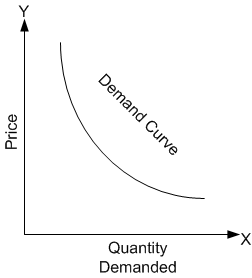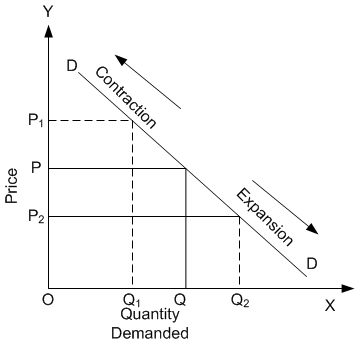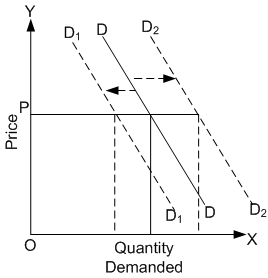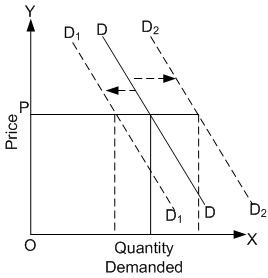CBSE
Class 10 Class 12
Demand for a commodity refers to ability and desire of a consumer to purchase a good at a given price and during a given period of time.
Demand Curve: A demand curve reflects graphically the relationship between the quantity demanded of a commodity and its price.
Law of Demand: Law of demand expresses the inverse relationship between own price of a commodity and its quantity demanded. It is valid only when other factors remain constant like: Income of the consumer, Tastes and Preferences of the consumer etc.
Exceptions to the law of demand: Sometimes more of a commodity is purchased with rise in prices and less with fall in prices. This is called an exception. The exceptions to the Law of Demand applies in case of Inferior goods or Giffen goods, Status symbol goods, Emergency etc.
Difference between Movement along a demand curve and shift in demand curve:
Movement along a demand curve: A demand curve which shows change in demand due to change in price alone is called movement along a demand curve. It indicates expansion and contraction of demand.
Shift in demand curve: It denotes shifting of an original demand curve to the right when demand rises at the same price and to the left when demand falls at the same price. It indicates increase or decrease in demand.
Normal Goods: These are those goods whose demand rises with rise in income of the buyer, & vice versa.
Inferior Goods: These refer to those goods whose demand falls with rise in income of the buyer & vice versa.
Shift in demand Curve: It refers to the shifting of an original demand curve to the right when demand increases at the same price (curve DD to curve D2D2) and to the left when demand falls at the same price (curve DD to curve D1D1) as shown in the figure.
Substitutes goods: These refer to those goods which can be used in place of another good to satisfy a particular want.
Complementary goods: These refers to those goods which can be used together to satisfy a particular want.